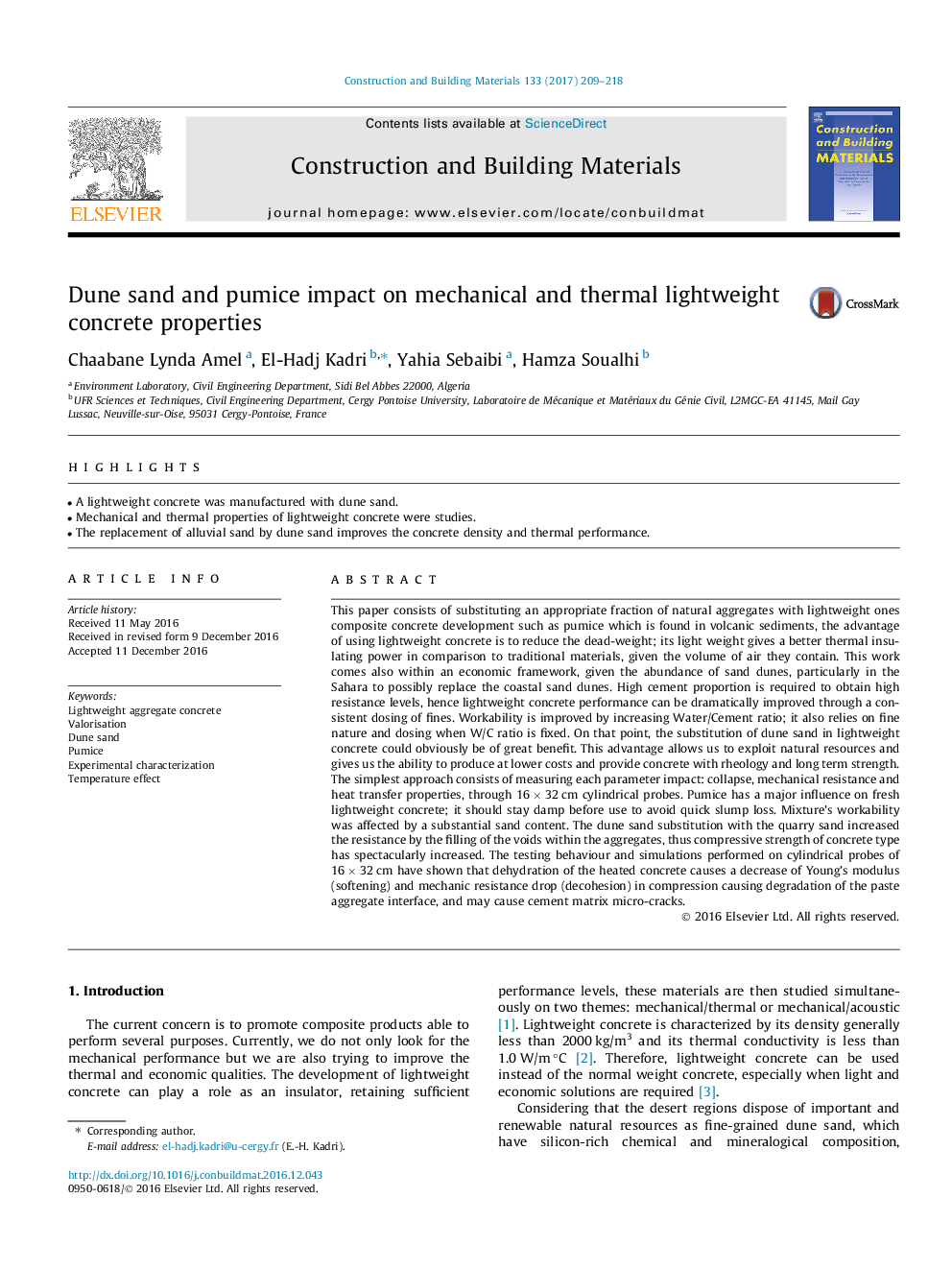| Article ID | Journal | Published Year | Pages | File Type |
|---|---|---|---|---|
| 4913767 | Construction and Building Materials | 2017 | 10 Pages |
Abstract
This paper consists of substituting an appropriate fraction of natural aggregates with lightweight ones composite concrete development such as pumice which is found in volcanic sediments, the advantage of using lightweight concrete is to reduce the dead-weight; its light weight gives a better thermal insulating power in comparison to traditional materials, given the volume of air they contain. This work comes also within an economic framework, given the abundance of sand dunes, particularly in the Sahara to possibly replace the coastal sand dunes. High cement proportion is required to obtain high resistance levels, hence lightweight concrete performance can be dramatically improved through a consistent dosing of fines. Workability is improved by increasing Water/Cement ratio; it also relies on fine nature and dosing when W/C ratio is fixed. On that point, the substitution of dune sand in lightweight concrete could obviously be of great benefit. This advantage allows us to exploit natural resources and gives us the ability to produce at lower costs and provide concrete with rheology and long term strength. The simplest approach consists of measuring each parameter impact: collapse, mechanical resistance and heat transfer properties, through 16Â ÃÂ 32Â cm cylindrical probes. Pumice has a major influence on fresh lightweight concrete; it should stay damp before use to avoid quick slump loss. Mixture's workability was affected by a substantial sand content. The dune sand substitution with the quarry sand increased the resistance by the filling of the voids within the aggregates, thus compressive strength of concrete type has spectacularly increased. The testing behaviour and simulations performed on cylindrical probes of 16Â ÃÂ 32Â cm have shown that dehydration of the heated concrete causes a decrease of Young's modulus (softening) and mechanic resistance drop (decohesion) in compression causing degradation of the paste aggregate interface, and may cause cement matrix micro-cracks.
Keywords
Related Topics
Physical Sciences and Engineering
Engineering
Civil and Structural Engineering
Authors
Chaabane Lynda Amel, El-Hadj Kadri, Yahia Sebaibi, Hamza Soualhi,
